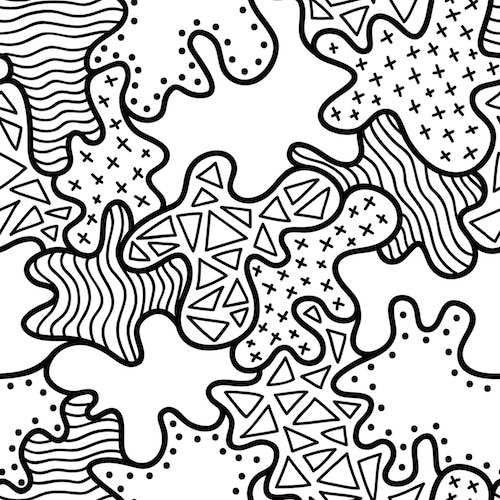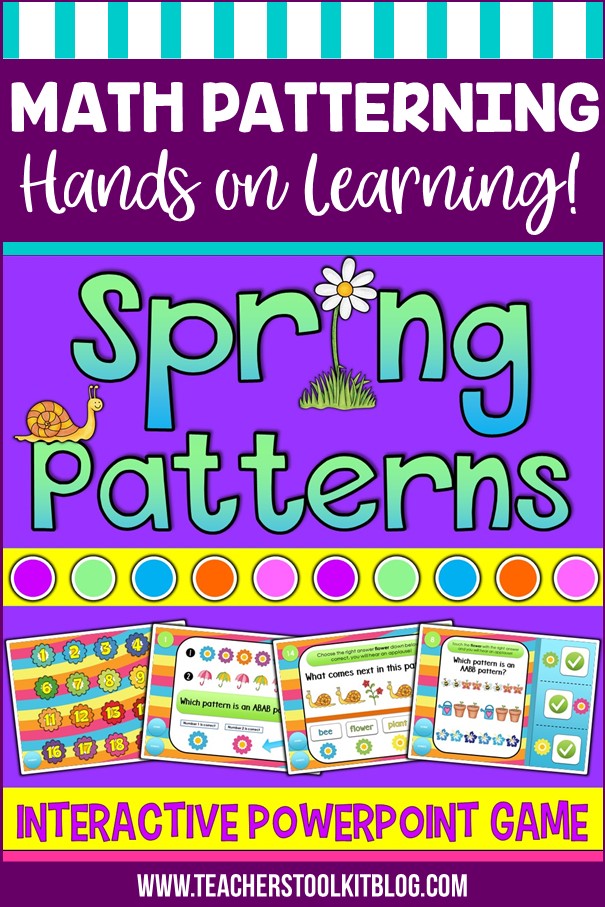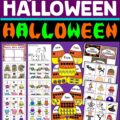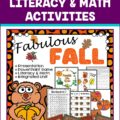Being able to identify math patterns is a basic, necessary skill for all students. Teaching this skill should start in early grades, as number patterns will increase in complexity as they advance in grade levels. Click here if you’d like to read more ideas for teaching math.
why teach math patterns?
In the early grades, studying number patterns will help students build their skills and foundations for increasingly difficult number work. Students should be able to identify, name, and extend math patterns.
In the simplest way of thinking, math is a series of number patterns. If students can recognize, create, and extend patterns, they will be able to make predictions about what the numbers will do next.
Patterns in math allow students to make generalizations and to see relationships. This ability will enable students to analyze data, understand algebra, and solve increasingly complex math problems.
Of course, we find patterns in areas other than math. For example, patterns are abundant in science, music, and literature as well. Giving students a solid foundation in understanding patterns in math will help them apply logic, critical thinking, and make hypotheses in other subjects.
Since we need to expose students to and help them understand patterns, so what is a fun way to teach this skill?
an idea for teaching patterns
One fun and artistic way to teach patterns is to help your students draw Zentangles! If you’re not familiar with the term, Zentangles are simply hand-drawn designs. They’re drawn spontaneously and they are all unique. Making them requires an understanding of patterns and how they work.

This is an example of a relatively simple Zentangle. It’s easy to see the patterns.
Teaching students how to draw Zentangles is not difficult. Start by using graph paper with large spaces. The easiest shape to start with is a rectangle. The students can draw them, or you can pass out pre-drawn ones. The starting shape is a called a “tile.”
Next, they’ll lightly freehand draw in pencil a “string,” which is simply a curve or zigzag shape that cuts the tile into smaller sections. Using a black marker or pen, fill in the different sections of the tile with different patterns. They can be simple, like lines or triangles as in the example above, or elaborate with many different curves and 3-D designs.
Completing a Zentangle requires patience and persistence, which are other skills we like our students to have. After they’re done with their designs, they can color them with markers which really makes the patterns stand out.
As students become more proficient with drawing Zentangles, the patterns they use will become more and more complex. An added benefit is that drawing Zentangles is very calming and reduces stress – it’s almost like meditating!
a fun game to teach math patterns
This Spring Patterns Interactive Game is perfect for teaching and reinforcing patterns.
This game is self-checking and works well with small groups or in a whole class setting. A recording sheet is provided for students to show their work and mark their progress. The game provides 20 problems to complete. After each problem students should return to HOME – this is the page with flowers which link to each problem. They can be completed in or out of order.
The game is available in two formats:
- normal view, like a PowerPoint presentation
- game view which automatically opens ready to play
WHOLE GROUP SETTING (Format 1)
- Print the recording sheet. (Can be found at the very end)
- Have the class sit around an interactive whiteboard.
- Teach and reinforce the skill with every problem.
- Students complete the recording sheet for each problem.
- Individuals can go to whiteboard to complete each problem.
SMALL GROUP SETTING (Format 2)
- The game can be completed on any device.
- If using an interactive whiteboard, groups can tally correct points for an eventual winning team.
- Teacher can decide if students will complete recording sheet.
Have you had your students draw Zentangles? Please share them with us!



